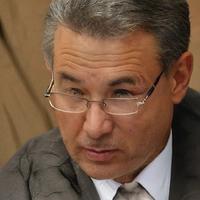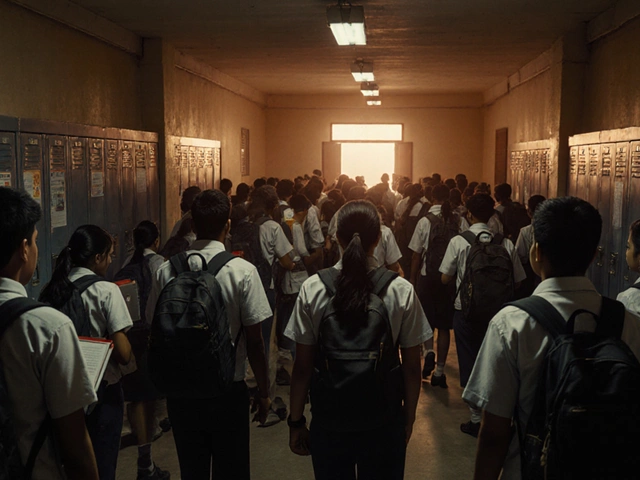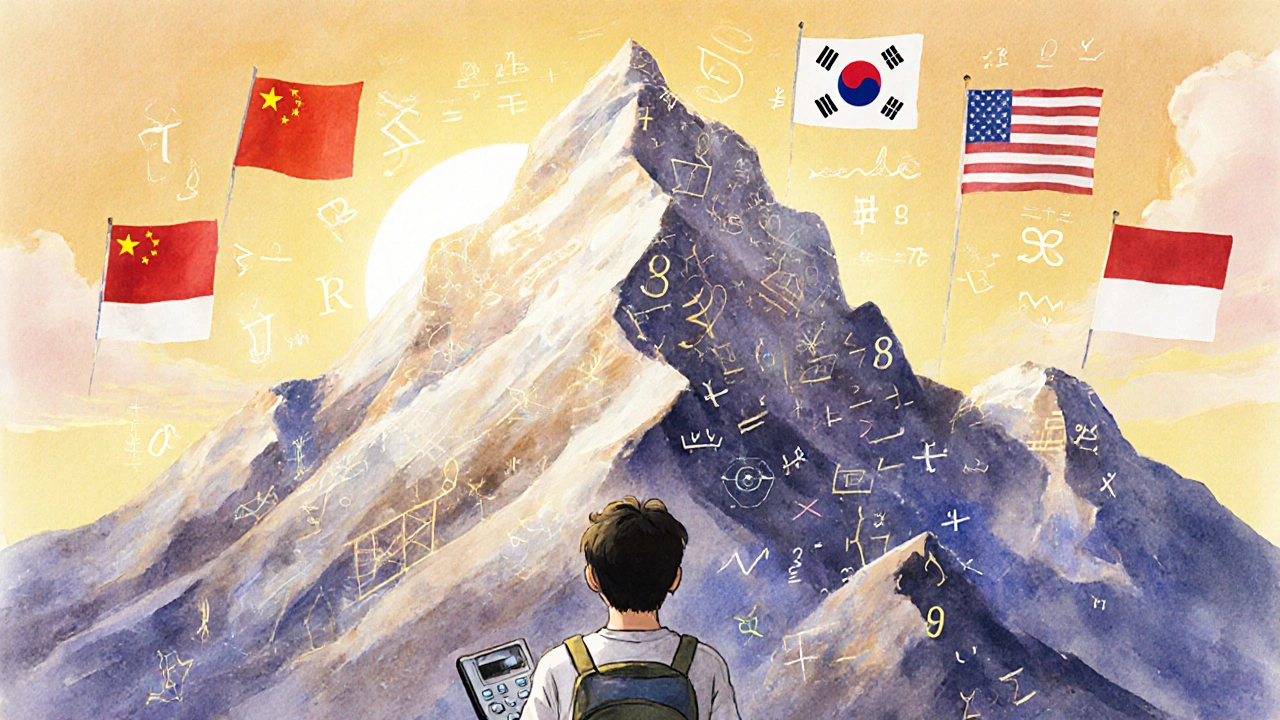
Math Rigor Estimator
Your Study Time
Key Insights
Top Performers:
- Singapore 6-7 hours
- China 5-6 hours
- South Korea 6-7 hours
Your Comparison
Ever wondered which nation makes math feel like a mountain climb? It’s a question that pops up whenever students hear about the crazy scores on international tests or the flood of medals at the International Mathematics Olympiad. Below we break down the data, compare the heavy‑hitters, and give you a roadmap if you’re gearing up for a tough math exam.
What We Mean by “Hardest Math”
Mathematics education is the system of teaching and learning mathematics in schools, shaped by curricula, assessment standards, and cultural expectations varies wildly across the globe. When we talk about the hardest math, we’re looking at three concrete factors:
- Curriculum intensity: hours spent on math, depth of topics, and pace of instruction.
- International assessment scores: results from TIMSS (Trends in International Mathematics and Science Study) and PISA (Programme for International Student Assessment).
- Olympiad performance: medals earned at the International Mathematics Olympiad (IMO), which reflects the elite end of the spectrum.
By triangulating these three lenses, we can spot which country consistently pushes students into the most demanding math environment.
How International Tests Measure Math Rigor
TIMSS assesses 8th‑grade students’ math and science knowledge every four years offers a snapshot of mid‑school strength. A 2023 TIMSS report showed the top five math scores:
- Singapore - 639
- Hong Kong - 632
- South Korea - 629
- Japan - 622
- China (Beijing, Shanghai, Jiangsu) - 620
Meanwhile, PISA tests 15‑year‑old students in reading, math, and science looks at real‑world problem solving. The 2022 PISA math scores put Singapore at 593, followed by China’s four provinces at 590, and then Japan at 527.
Both tests use scaled scores, so the gaps aren’t just statistical noise-they reflect genuine differences in curriculum depth, teacher preparation, and cultural attitudes toward math.
Olympiad Success: The Elite Benchmark
The International Mathematics Olympiad is the world’s premier competition for pre‑university students, held annually since 1959 is another yardstick. Medal tallies from the last decade show a clear leader‑board:
- China - average of 8 gold medals per year.
- South Korea - steady 5‑6 golds annually.
- Russia - historic powerhouse, now averaging 4 golds.
- United States - climbing, with 3‑4 golds in recent years.
- Singapore - consistently 2‑3 golds, impressive for its size.
Olympiad problems dive far beyond school textbooks, demanding creative proof techniques and abstract thinking. A country that dominates here clearly cultivates a deep, rigorous math culture.
Country‑by‑Country Snapshot
| Country | TIMSS Score | PISA Score | Average IMO Golds (last 10 yrs) | Weekly Math Hours (grade 8‑12) |
|---|---|---|---|---|
| Singapore | 639 | 593 | 2‑3 | 6‑7 |
| China (Beijing, Shanghai, Jiangsu) | 620 | 590 | 8 | 5‑6 |
| South Korea | 629 | 574 | 5‑6 | 6‑7 |
| Japan | 622 | 527 | 4‑5 | 5‑6 |
| Russia | 618 | 512 | 4 | 5‑6 |
| United States | 515 | 470 | 3‑4 | 4‑5 |
Numbers tell a story: Singapore consistently tops the scaled tests, but China’s avalanche of IMO gold medals signals the deepest elite training. South Korea sits in the sweet spot with high test scores *and* strong Olympiad showings. Russia and Japan keep the pressure on, while the United States lags behind on both fronts.
Why Those Countries Feel So Tough
Three common threads explain the rigor:
- Early specialization: In Singapore and China, students encounter abstract algebra and proof‑based geometry as early as grade 7. That head‑start builds confidence in tackling high‑level problems later.
- Competitive culture: South Korean schools run weekly “math clubs” where students solve past Olympiad questions for extra credit. The pressure to rank high on national exams fuels extra study hours.
- Teacher expertise: Nations that invest heavily in teacher training (e.g., Japan’s rigorous certification) ensure classroom instruction stays ahead of standard curricula.
Combine those factors, and you get a pipeline that continuously churns out students ready for the toughest math challenges.
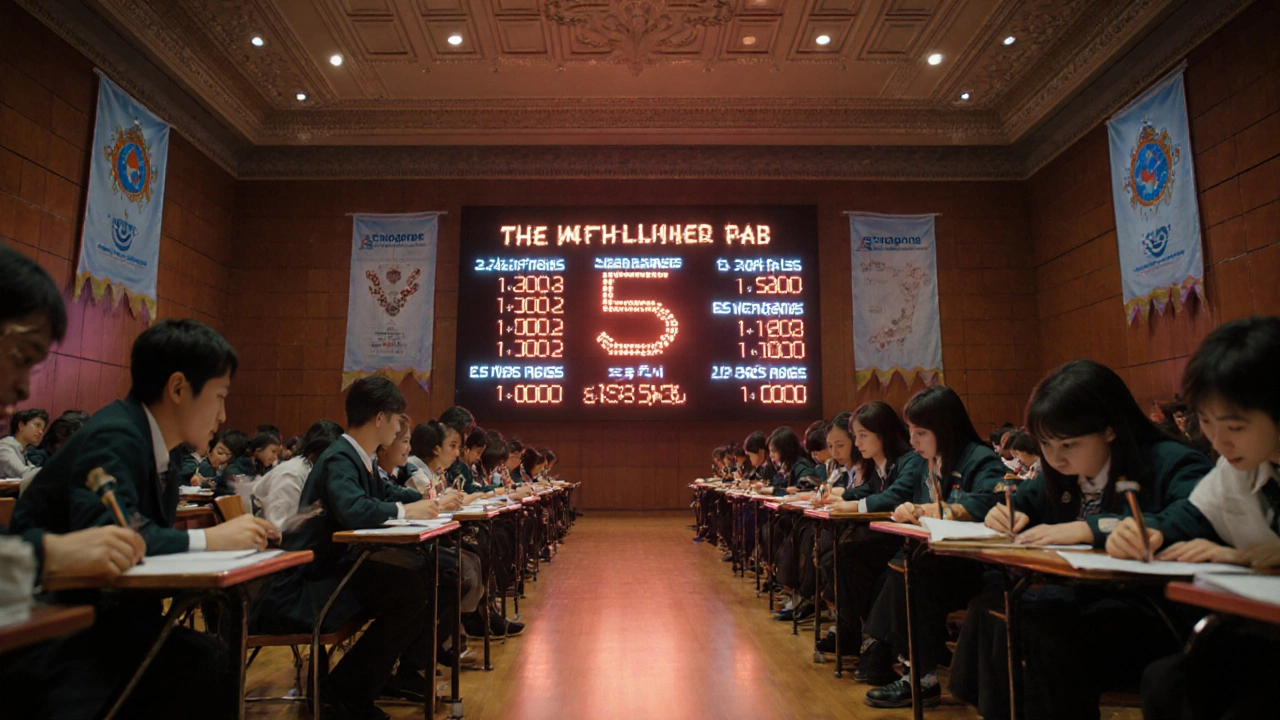
What This Means for Competitive Exam Aspirants
If you’re eyeing exams like IIT JEE, SAT Math, or national university entrance tests, you can borrow strategies from the "hardest math" countries:
- Adopt a problem‑first mindset: Instead of memorizing formulas, practice with past IMO or national contest problems. The emphasis on proof and reasoning sharpens analytical skills.
- Schedule dedicated math hours: Aim for 5‑7 hours a week of focused practice, mirroring the weekly load in top countries.
- Join a study group: Peer discussions mimic the collaborative clubs in South Korea and Singapore, helping you spot hidden patterns.
- Use high‑quality resources: Textbooks like "Art of Problem Solving" series or the Chinese "Gaokao" preparation guides provide deep coverage.
These habits can lift your performance, even if you’re not in a nation known for brutal math curricula.
Common Pitfalls and How to Avoid Them
Trying to emulate the toughest systems can backfire if you ignore personal limits. Here are three traps to watch out for:
- Burnout: Piling on 10‑plus hours daily may lead to fatigue. Balance study with physical activity-many top Asian students jog or play sports to reset.
- Over‑reliance on rote learning: Memorizing procedures without understanding stops you from solving novel problems. Always ask "why" after each solution.
- Neglecting foundational concepts: Jumping straight to Olympiad‑level geometry can leave gaps in algebra or number theory. Build a solid base first.
Keep these in mind, and you’ll stay on the fast track without crashing.
Quick Takeaway Checklist
- Identify which of the top countries-Singapore, China, South Korea-aligns with your study goals.
- Use TIMM S and PISA data to gauge national curriculum intensity.
- Practice at least three Olympiad‑style problems each week.
- Schedule 5‑7 dedicated math hours weekly.
- Mix solo study with group discussions to simulate competitive clubs.
Follow this roadmap, and you’ll be tackling the toughest math problems with confidence.
Which country scores highest on TIMSS math?
Singapore topped the 2023 TIMSS assessment with a score of 639, followed closely by Hong Kong and South Korea.
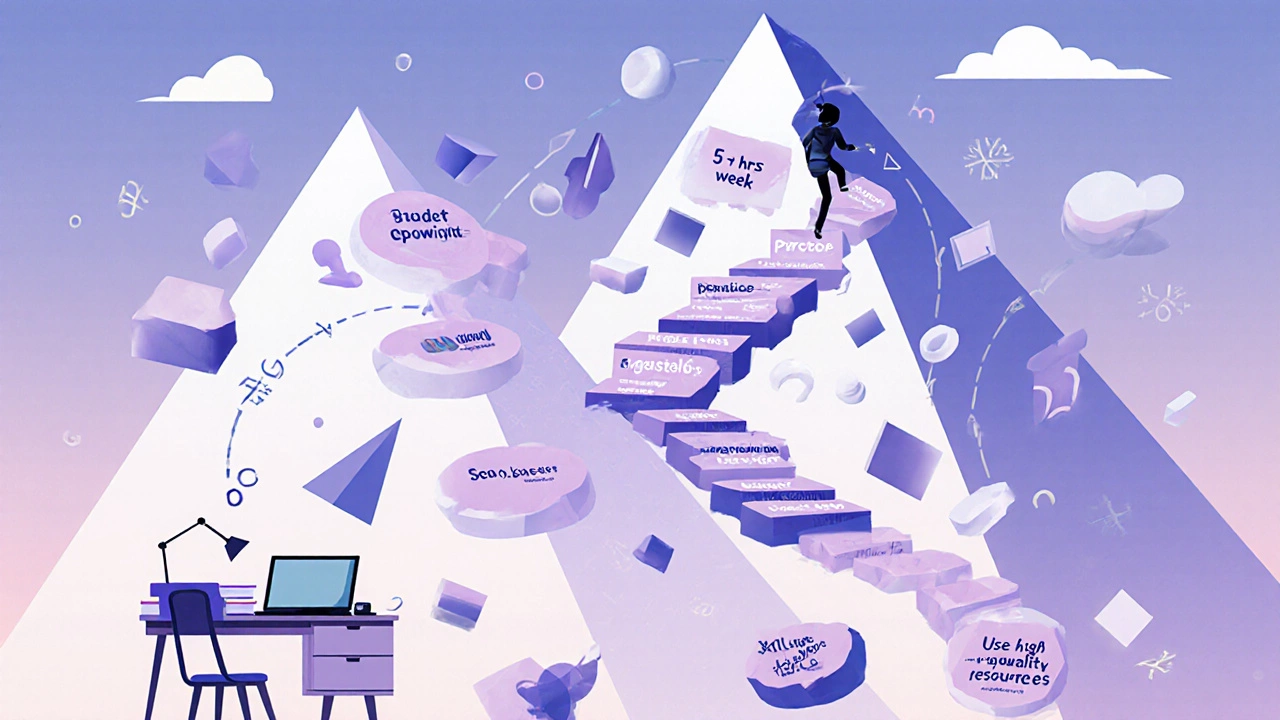
Why does China dominate IMO gold medals?
China runs intensive training camps for selected students, starting as early as middle school. The curriculum emphasizes proof techniques, combinatorics, and number theory-core IMO topics.
Can I achieve "hard" math skills without living in a top country?
Absolutely. Adopt study habits from the leading nations: regular problem‑solving, peer study groups, and focused weekly math hours. Online resources and virtual Olympiad archives make elite practice accessible everywhere.
How many math hours do students in Singapore study per week?
Typical secondary‑school students in Singapore spend about 6‑7 hours per week on dedicated math lessons, plus additional time for enrichment programs.
Is PISA a better indicator of math difficulty than TIMSS?
Both tests measure different aspects. TIMSS focuses on curricular knowledge for 8th graders, while PISA evaluates real‑world problem‑solving for 15‑year‑olds. Together they give a fuller picture of a country’s math rigor.
More Articles

Top Easy-to-Get Government Jobs in India (2025 Guide)
Discover the most accessible government jobs in India for 2025, see eligibility, salary, and step‑by‑step preparation tips to land a secure role quickly.

How to Create a Course Online for Free: Your No-Cost Launchpad
This article walks you through making and launching your own online course without spending a single penny. It covers the best free tools, setting up lessons, sharing your content, and smart ways to attract learners. If you're ready to teach what you know, this guide will help you skip the confusing stuff and actually get started. Expect honest tips, facts, and a straightforward approach to building your e-learning space. You'll even learn how to stand out in a crowded market.
